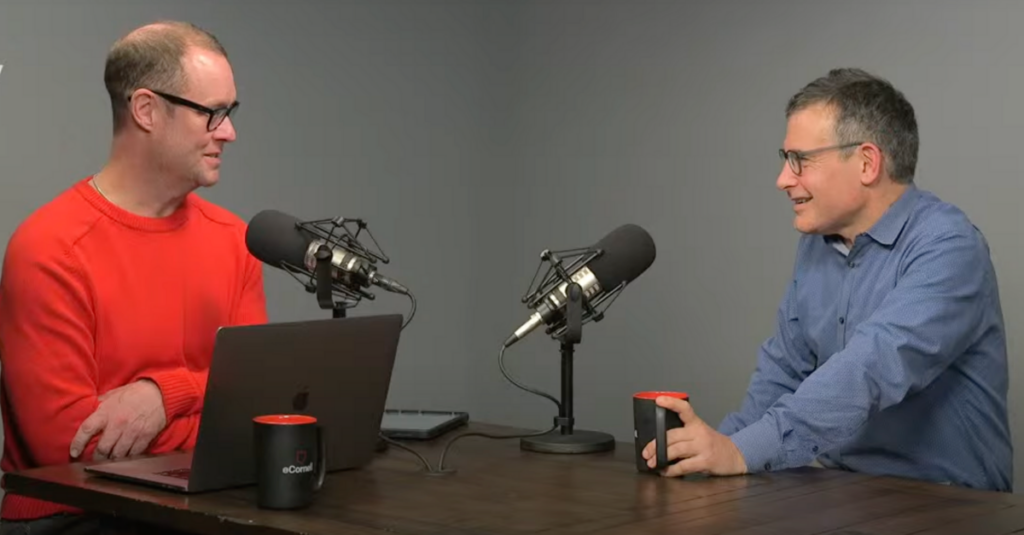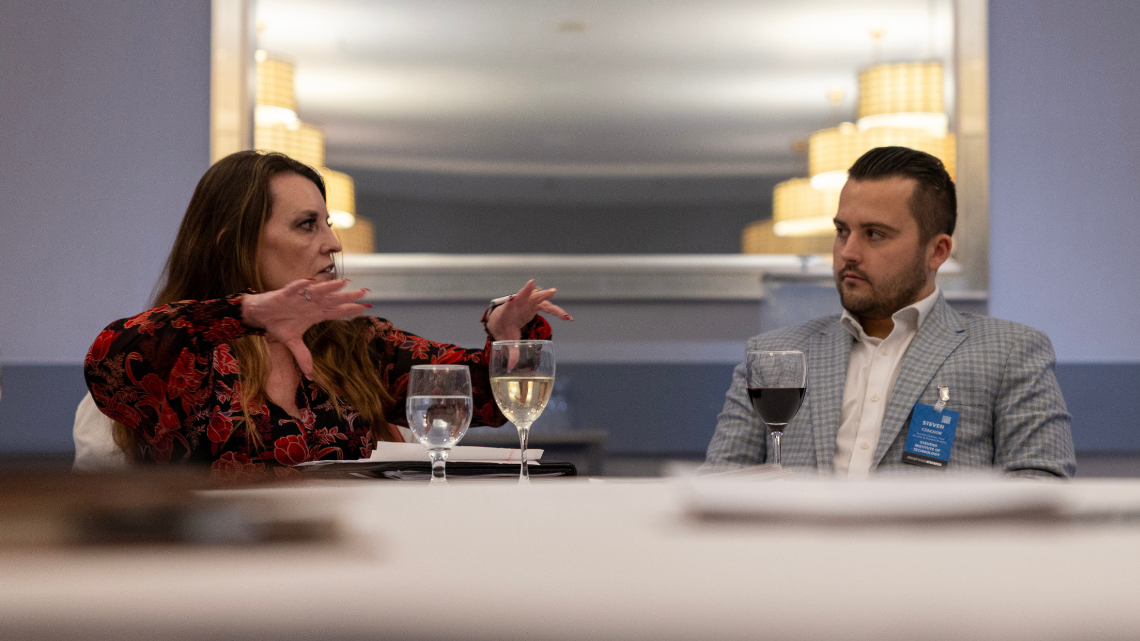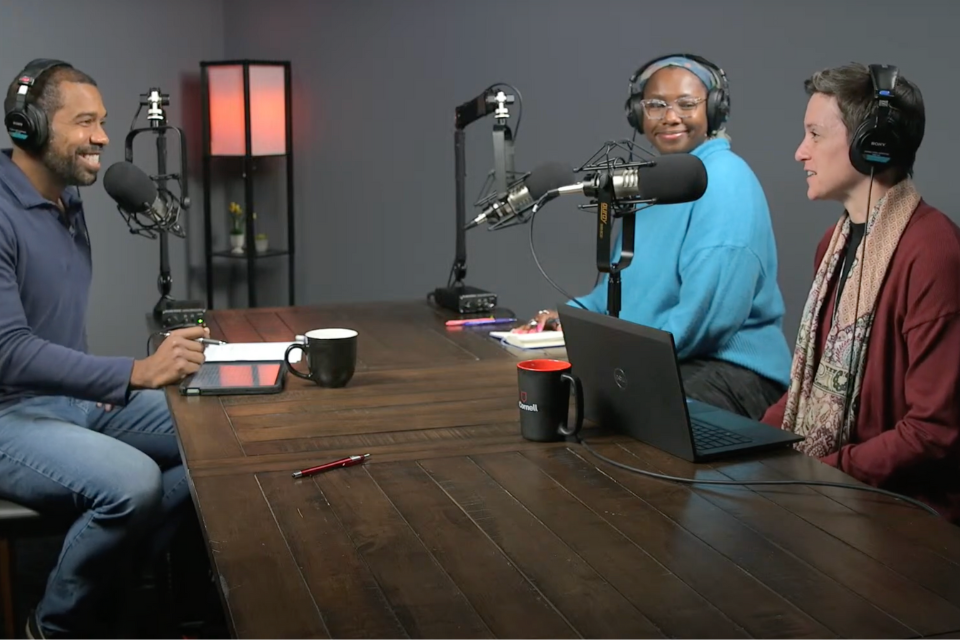
Experiences with depression have hit record highs, with nearly 30% of U.S. adults reporting diagnoses. In the workplace, the figures present greater cause for alarm — around three in four employees have grappled with matters that impact their mental health and stigma that inhibits their access to care. The costs of this double-edged challenge are significant for workers and organizations; the latter lose billions of dollars related to mental health issues annually.
Jonathan Rottenberg believes there is a rarely discussed and remarkable silver living: A meaningful number of individuals who have experienced depression not only go on to experience well-being but flourish in their lives. Rottenberg, a professor of psychology and director of the Better Outcomes Laboratory at Cornell, shared his research and reasons for optimism in a recent Cornell Keynote.
What is depression — how do experts define it?
“Depression is a mood disorder, and it’s a profound state involving symptoms like feeling sad, losing interest or pleasure in things, and then a number of other associated symptoms. These symptoms come together, and unfortunately, depression tends to be disabling and also is accompanied by a lot of distress of people who feel quite bad, and in severe cases, people might actually become suicidal.”
What is the typical prognosis for depression? Do most people experience recovery or recurrence?
“Typically, depression is recurrent, meaning if you had one episode, you’re likely to have another. In addition to that, it’s likely that you’ll have some degree of continuing symptoms, so even during better periods, there’s still some burden of depression with you.
“For about half of people who have depression, it is recurrent, but for the other half it is not. People who have only one single lifetime episode of depression — that’s very common, and we don’t actually know so much about that very large group of people.”
Why is symptom reduction the focus of most depression research?
“The field of clinical research and treatment research is 100% geared toward symptom reduction as the main outcome, but our research suggests that depressed people have a wide variety of aspirations for their life, and reduction in symptoms is just one piece.”
How are broader recovery goals addressed in mental health treatment?
“Practitioners will have discussed with their clients these other themes because, in part, these are things that the clients will themselves bring up. As part of the nature of depression, people feel desperately cut off from their past. They have trouble even imagining times when [they weren’t] depressed, and so they desperately want this reconnection with [their former selves]. That said, researchers really haven’t studied this nearly as much in clinical practice and in real people. This is very important, but our researchers have not caught up to the reality of what the people on the ground really care about.”
What do we know about good outcomes, both historically and in present-day state-of-the-art research?
“I think it scared a lot of people off in the sense that we had all this research that suggested rather strongly that ‘not so good’ outcomes were the norm. Typically, if one had an episode of depression, one could expect to experience a recurrence and continuing symptoms, even during better times. There would often be some ongoing burden of symptoms. I think that’s partly why people maybe didn’t have the imagination to wonder whether, in addition to these not-so-good outcomes, there might also be people who not only recovered but actually flourished.
“We’ve always known that some people recover in the sense that they no longer have symptoms, which is great, but we didn’t imagine that people might be flourishing — doing really well in relationships, jobs, spiritually or emotionally. And if you don’t imagine that something is very likely, you might not research it, and that’s how it was until about a decade ago. There was virtually no research on good outcomes other than recovery, which is, of course, important. Recovery — meaning the symptoms are gone — is one kind of good outcome, and we know that many people fully recover from depression.”
What are the challenges individuals face when considering disclosing a mental health condition?
“There are some forums, in particular, where disclosure is extremely difficult. One would be in workplace settings. Many people have all kinds of negative associations and fear about mental health problems and . . . really fully empathizing with what this person is going through because that is part of the reality and we cannot ‘happy talk’ our way out of that. We still live in a society where there’s a lot of judgment. The younger generation is making progress, but there are still these domains where we haven’t made as much progress as you would think, and employment is a big one.”
Has the research at Cornell’s Better Outcomes Laboratory disrupt historical assumptions about depression recovery?
“Our research aims to challenge the bleak outlook that’s often associated with depression. We look at whether people can not only recover in the sense of losing symptoms but also go on to thrive emotionally, socially and professionally.
“So many of these outcomes you could say would be tricky to measure . . . we might have different ideas about who’s doing well. I wanted to start with a good outcome that most people think is important: happiness. We started with psychological well-being, and that had the dual good quality of a) being important to a lot of people who experience mental health problems, and b) being readily measurable.”
What did your research reveal about the likelihood of achieving high levels of well-being after a diagnosis of depression?
“The conventional wisdom would say that this is going to be pretty rare, right? These people had serious diagnosed depression . . . [we expected] 1% who are really flourishing and reporting these very high levels of well-being. What we found was that depression cut the chances of reporting high levels of well-being about in half, and about 10% of depressed people went on to report these very high levels of well-being. This really challenges the conventional wisdom that this kind of good outcome is rare. These good outcomes are real, and this is not an insignificant group of people.”
What are the next steps for your research, and what direction do you see yourself going?
“The next step is to understand what explains these good outcomes and how people transition from depression to states of well-being. My strong hypothesis is that there won’t be one single road to well-being; rather, there might be various paths involving cognitive, behavioral, biological and social factors that explain why some people experience good outcomes.”
What do you think can be done to destigmatize conversations around depression?
“Being matter of fact and really normalizing it as part of the human experience, realizing that depression is probably going to be some part of your identity — not your whole identity but part of your identity — and creating forums like this for people to engage are really important. I think that there’s going to be big changes, particularly in younger people [who] are way more comfortable talking about mental health problems. I think there are going to be some sea changes to finally get our society to less stigma.”
In his research, Jonathan Rottenberg, Ph.D., explores long-term outcomes and well-being after depression and other mental health issues. Rottenberg served as the director of clinical training and director of the Mood and Emotion Lab at the University of South Florida. He is the author of “The Depths: The Evolutionary Origins of the Depression Epidemic” and “Depression: What Everyone Needs to Know.” Learn more by watching Ever After, Rottenberg’s video series about life after depression.
This Q&A has been edited for length and clarity. Experience the full Life After Depression Keynote video or podcast.
If you or someone you know is experiencing mental health challenges or considering suicide, please contact the 988 Suicide and Crisis Lifeline by dialing 988, texting “STRENGTH” to the Crisis Text Line at 741741, or visiting 988lifeline.org.








 Picture a colleague grappling with a tough decision — they’re probably feeling the weight of uncertainty and pressure. In such moments, it’s tempting to step in with solutions or advice. But real support means resisting that urge, putting your own ideas aside and listening carefully to understand their concerns, priorities and the help or reassurance they seek.
Picture a colleague grappling with a tough decision — they’re probably feeling the weight of uncertainty and pressure. In such moments, it’s tempting to step in with solutions or advice. But real support means resisting that urge, putting your own ideas aside and listening carefully to understand their concerns, priorities and the help or reassurance they seek.